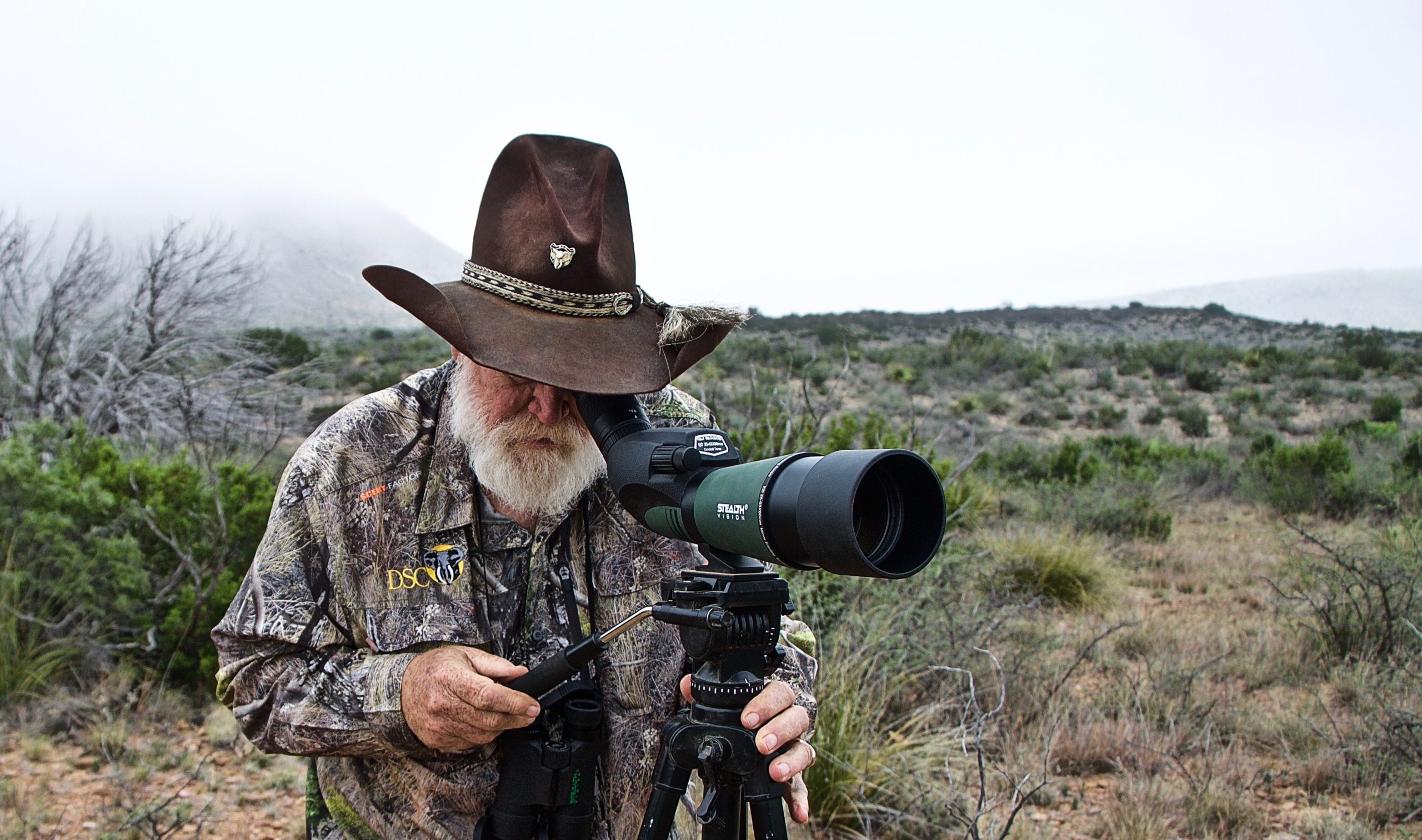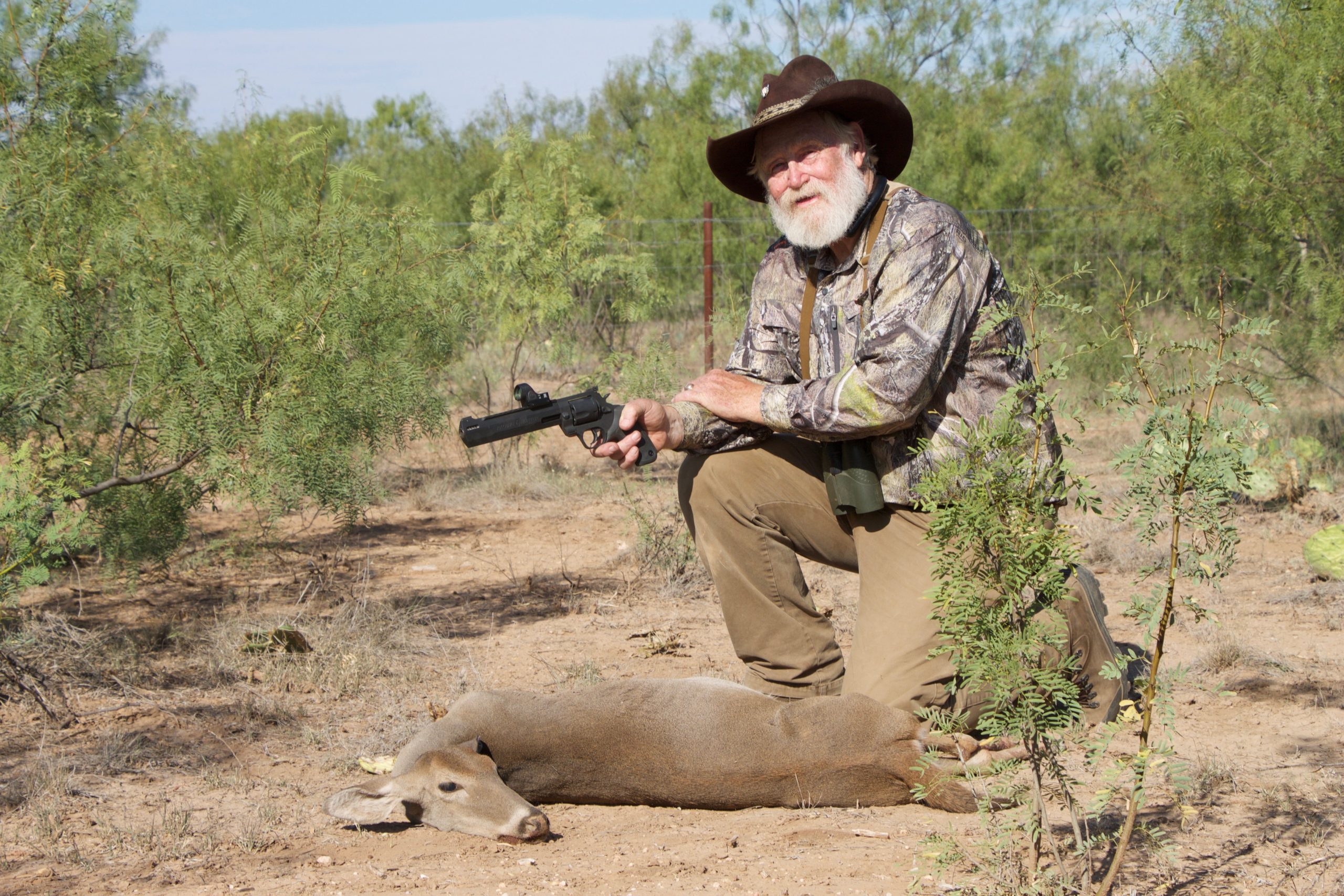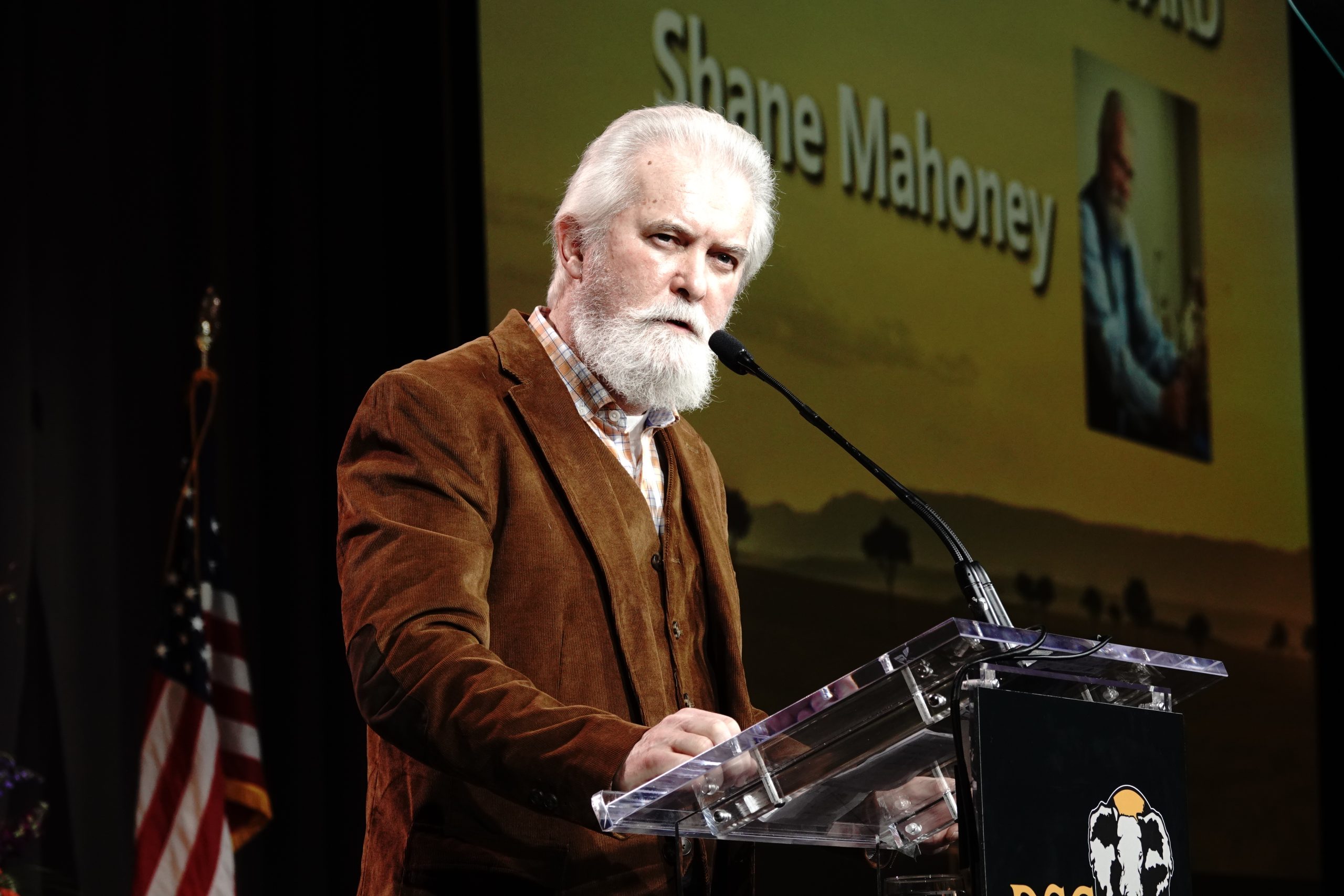Times were different then! There were no trail cameras! Scouting for whitetails meant a whole lot more different things than these days when the hunter simply puts out his cameras, then later checks photos including with some being sent to his or her computer or phone, looks at what time the buck came by or fed on the bait then hunts appropriately in hopes the buck will come by again at roughly the same time.
Scouting for bucks back years ago meant looking for tracks, rubs, scrapes, and talking to farm hands or ranch personnel who spent time on the land about what they saw. This when you, as the hunter could not personally be on the property. It meant spending time after the hunting season was over to learn what you could about the deer that lived there. Back then we avoided doing much pre-season scouting because we did not want the mature bucks patterning us. Two weeks or so after the hunting season closed we went back to our hunting area and spent time learning about the deer we had hunted. A bit later in the winter/early spring we returned to look for shed antlers. Over year of doing this on the properties we hunted, we “figgered out” big mature bucks, those with really big antlers were generally shot very close to where we had found their shed antlers from the previous season, often within a matter of feet.
To round out scouting for whitetail we asked questions of those who lived on or worked the land. What had they seen? Where had they seen mature bucks? And any other questions we could glean that might provide insight to taking a mature whitetail.
Frankly I loved those days when there was a mystery about what might step out of the brush or woods, rather pretty well knowing what deer lived there and practically all the bucks on property were named. That said we did occasionally back when have names for a buck, such as “The Cemetery Buck” that would show up each year near the remnants of an ancient cemetery.
There was one buck I finally gave a name. He earned it!
I was doing the annual helicopter game survey on property leased by some friends. Each year a small group of us hunted the property between Christmas and New Year. The small group, known as the “Grand Slam” was comprised primarily of Bob Parker, Jr., Tom Curtiss, Buddy and Bob Christie and me. This back in the mid-1970’s. I was the only graduate of Texas A&M in the group. The others had attended the University of Texas.
Flying over a remote area of the rather large South Texas ranch, I spotted a long-tined typical ten-point buck with a 24 or 25-inch outside spread. He too, had about a six-inch drop-tine on each beam. I guessed him to be a five or six-year old based on body but also in how he acted when confronted by the helicopter. I estimated he would easily score in the 180’s Boone & Crockett. As we hovered above the buck, he looked up at the minor annoyance above and stepped into a whitebrush thicket and was gone.
I mentioned the buck to fellow Grand Slam members. Only seldom did I tell hunters where I had actually seen big mature bucks. This was one of those exceptions. We hunted the buck hard that year, but we never saw him.
Following year, I again saw the buck in the same area during the helicopter survey. His antlers were no less big or impressive than the year before. That fall we hunted hard for the buck. But he was never seen by any of us. The local vaqueros saw him a few times in the area where I had seen him while pushing cattle out of that pasture to another. But those were the only sightings.
Going into the next year’s survey I wondered if I might again see the buck which now had to be eight years old, if not older.
The first time I had seen the buck had been in brushy drainage between two tanks (man-made water holes or stock tanks) which were about three quarters of a mile apart. Doing transects across the pasture, I did not see the big wide, double-drop buck. So after we had finished our survey of that individual pasture before moving on to others on the ranch, I asked the pilot to make one fast trip over the drainage between the two tanks. No sooner had we passed the dam bank of eastern most waterhole I spotted movement in the dense canopied creek bottom. It was a buck. He briefly stepped into a clearing. No doubt it was the buck I was looking for! I could clearly see his rack. He had ten very long points and a 27 to 28-inch wide outside spread. As he turned to look up at the helicopter I could see he had a seven-inch drop-tine on each beam. I could also see a long scar on the left side of his neck. There was o doubt in my mind it was the old buck from years past, and, he was bigger than he had been before.
We again hunted the buck really hard once again. We even tried a “deer drive” to push him from cover. But all our efforts produced were a few does and fawns, three young bucks as well as a herd of about thirty javelina, eleven wild hogs, and two coyotes.
It amazed me a most likely nine years old or older buck could produce such an amazingly large set of antlers. But obviously he had done so. Later as part of research we learned some bucks, although not all, produce their biggest antlers from the year of nine to eleven, if they are on a high quality day to day diet.

We again hunted the area where I had seen the buck really hard that fall, but all for naught. The big buck with double drops was not seen.
The following late October, I once again had to go back and look for the old buck after we had completed the survey. We found him close to where I had seen him the year previous. He was bedded in a small grassy patch in the middle of the thicket. When we got close to him with the helicopter, he stood up, looked up at us long enough for me to get a good look at his rack and neck. Then he stepped into a thicket and was gone.
Once again, I could hardly believe what I had seen. He was huge! Ten long points, spread 24 to 25 inches, double drops, this time each about seven or eight inches long.
Wish I could tell you we shot him that fall. We didn’t. But I did decide to name him.
When I was in the third grade I had gotten to know the janitor at the school I attended. Tobe White, then looked to be in his 60’s although I had no idea how old he might really be. Tobe always wore a smile. I often spoke with him. He like me he loved to hunt and fish. After I left the area where I grew up, I did not see Tobe for over 20 years.
One day while visiting my parents I ran into Tobe at the local grocery store. He looked no different than he had when I first had met him when I was nine years old!
While telling fellow Grand Slam members about seeing the old drop-tine buck, I related my story about Tobe and how he never seemed to change. “Think we’ll call that old buck “Tobe” in honor my old friend who never seemed to change!” I announced.
Needless to say we did not take “Tobe” that year. Nor did we take him the following year. I did not see him doing the helicopter game survey in spite of going back to the thickets to look for him. I wondered if perhaps one of the mountain lions which traveled through the area, or the abundant coyotes living there might have taken him down. Then two years hence while talking to one of the vaqueros who now worked the pasture where Tobe had been living. “Senor Colorado, I saw ju ol’ macho grande, won ju geev de nom off Tobe! Hee’s steel libs ‘tween two tanques, en hees quernos muy beeg!”
The following fall we decided not to do a helicopter game survey until after the hunting season. We had had tremendous rains. Brush canopy was too thick to adequately see deer movement so we decided to conduct the survey in late January.
Finally, it was time for our annual Grand Slam hunt. I arrived at the ranch the afternoon before our hunt started. I spent the evening visiting with Homero who took care of the cattle in the 5,000-acre pasture where I had previously seen Tobe.
“I saw an extremely old looking buck about a week ago. He was a basic ten point with some kickers, and it looked like he might have a drop-tine or two, could be the old Tobe buck, y’all have been chasing for years. He was between the two tanks.”
I thanked Homero and headed to camp.
During the following four days I hunted the thickets between the two tanks. I rattled up fifteen mature, twenty-seven middle-aged, plus another ten or so yearling bucks. I passed on another twenty or so good bucks. The rut was just kicking in. The temperature was wonderfully cool! I was having an absolute blast. It was South Texas Brush Country hunting at its best!
Last morning of the hunt, I rattled and still-hunted another part of the ranch. I found four really big ten points. I was sorely tempted to pull the trigger but then for some reason I could not explain I passed on them.
About four in the afternoon I decided to still hunt along the edge of the thicket where I had seen Tobe in the past.
A southwesterly wind blew so I started at the east most tank to move into the wind. No sooner had I eased to the top of tank dam, I spotted a buck two hundred yards away. A quick look through my bino confirmed it as a very decent buck with at least ten typical points plus a couple of extra points. It looked like he had some brush hanging from his left main beams. Looking more intently I saw it was not brush hanging from his right antler, but at least two drop-tines.
I glanced at his body. His ribs and hip bone were showing. His neck was slender. Skin hung loosely from his face and neck. I knew I wanted to take this buck!
Even though I knew my 7×57 Ruger Model 77 was loaded, I opened the action and confirmed the barrel held a 139-grain Hornady soft-point.
The buck lowered his head to feed. I immediately took advantage of the wind in my face, several bushes between us, and quickly cut the distance to less than a hundred yards. There I used a gnarly mesquite for a solid rest. The crosshairs settled on the buck’s shoulder. I pulled the trigger. The buck went down. I bolted in another Hornady round, found the now downed buck on the ground and waited for any movement. There was none
Moments later I had walked to where my buck lay. I pulled a tag from my license, cut out the month and date then filled in the ranch and county. Legal, I started looking at my buck. He was ancient! I inspected his antlers. They too, looked like they belonged to a truly old buck. His rack had ten typical points on about a 22-inch spread frame. He indeed had not two but three drop-tines on his right side plus several short non-typical points. It took me a couple of tries but I finally tallied eighteen points over an inch long. He was truly a handsome deer, even if his body showed great age.
I was admiring my buck’s antlers when I heard something behind me. I turned to look. It was Homero, horseback. He took one look at the buck and said, “That’s him. That’s your Tobe buck!”
Could it be? His antlers were shaped the same as the much bigger antlers the buck had once produced. He did have drop-tines, albeit three on one side rather than double drops. I looked at his teeth. His incisors were worn to the gum line. I poked my fingers into his mouth to check his back teeth. Some molars were missing. Those remaining were worn to the gum-line. I happened to look at the left side of his neck. There was a long scar, same as what I had seen several years ago.
Homero was right! I had finally taken Tobe!
There was a celebration that night in our camp! While we “ooo-ed and ahh-ed” over my ancient buck. Buddy produced a tape and gross-scored the rack. When the total was tallied, it came out to just shy of 160 B&C points. I was ecstatic, but it had little to do with what Tobe’s antlers scored! It had to do with finally besting a wily whitetail buck we had hunted for so long, one who had lived a charmed life.
After caping my buck, I pulled what was left of a couple of his teeth. These were sent to a lab where they would be “sectioned” and looked at under a microscope to look the layers in his teeth (centum aging) to come up with his true age.
By tooth wear, the best I could come up with was nine-plus year. Several weeks later I got the report from the aging lab. They determined “Tobe” was 13 ½ years of age when I took him.
I have not named a buck since “Tobe”. I seriously doubt I ever will!



